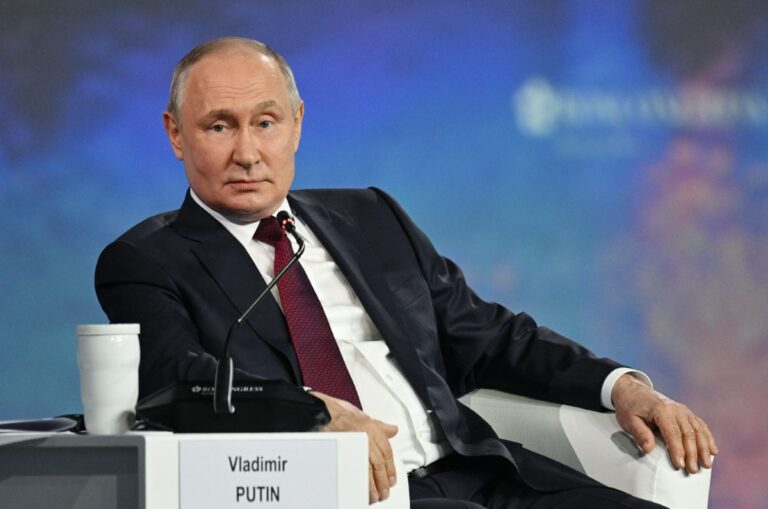It is perhaps one of the few Putin threats that have come true, but in this case perhaps the only one that has been realised even before it is uttered.
Already noted in a Human Rights Watch report, the Russian Federation has been using cluster bombs on Ukrainian territory since the beginning of the Russian-Ukrainian conflict.
And the motive behind this indiscriminate use, as well as this umpteenth groundless threat, is not as obvious as it may seem.
Table of Contents
Putin is threatening the use of cluster bombs in response to Kiev. Too bad he is already using them
Putin warns: Russia reserves the right to use cluster bombs if Kiev starts using them. This is what Vladimir Putin, interviewed by the Russia 1 channel, tells the people.
According to his statement, Moscow has never used this kind of weapon. Despite the fact that it is not among the 123 countries that are signatories to the Convention on Cluster Munitions. Which was included in the 2008 Dublin Treaty. This convention makes the signatory state responsible for refusing to manufacture and use cluster munitions.
This is precisely why Putin accuses the other two non-signatory states of wanting to use them during the conflict: Ukraine and the United States.
Indeed, the Biden administration, albeit reluctant at first, has allowed cluster munitions to be sent to Kiev to help them in their counter-offensive, the country now having run out of ammunition, even those cluster bombs it holds.
Russia too is beginning to suffer the long-term effects of this war, between defections, dwindling stocks, and even a failed coup by one of Putin’s loyalists, Evgeny Prigohzin.
And this despite the fact that it has already been using cluster bombs since the beginning of the conflict, since 24 February 2022. This according to the latest report by Human Rights Watch, an international non-governmental organisation that defends human rights.
And not only on the battlefield, but also against population centres, killing thousands of Ukrainian civilians. They are estimated to have been used massively against civilians in Kramatorsk, Mykolaiv, Kharkiv, Novorontsovka. And with a failure rate of between 30% and 40%. It is precisely this failure rate that makes the cluster bomb highly dangerous.
Read also: Biden in London ahead of NATO summit in Vilnius. Sunak: ‘On cluster bombs to Ukraine you are wrong’
The danger of cluster bombs
Since their wartime use, cluster bombs were considered the standard munition in use by the air forces of many countries around the world between 1970 and 1990. Only after the end of the Cold War did many countries withdraw from production, until 2008, with the signing of the Dublin Treaty and the Convention on Cluster Munitions.
Many countries have signed the agreement, but not for humanitarian reasons. Cluster bombs are lethal, but not because they are efficient, but because of their unpredictability.
Ordnance composed of explosive sub-munitions (ranging from a minimum of 2 to a maximum of over 2,000 sub-munitions) are highly armour-piercing and perfect for creating the maximum possible damage over a wide range. They are even perfect in destroying power lines.
And also in making terrain inhospitable. The main shortcomings of cluster bombs are the enormous difficulty in controlling the range within which they are dropped. As well as the high levels of malfunctioning of sub-munitions.
It is no coincidence that the Convention itself points out that the danger of the bombs lies in their failure rate of between 2% and 40%. They may fail to explode and remain on the ground even after the conflict is over. And anyone who steps on them could easily reactivate them.
The risk of a new escalation, and the use of new weapons
Russian President Vladimir Putin has warned his camp opponents of the presence of ‘a sufficient stockpile of various types of cluster bombs’. Such a quantity of cluster bombs that ‘[…] if they are used against Russia [he reserves] the right to mirror actions’.
As a threat it is not so different from those concerning the possible use of nuclear weapons on Kiev, a threat that has been voiced several times by Putin and his ministers as Lavrov and Medveded, to hint at a kind of point of no return in the Russian-Ukrainian conflict.
Indeed, it would not be the first conflict in which cluster bombs are present. But it could be the first in which nuclear weapons are used, after the bombings of Hiroshima and Nagasaki.
For Putin, the use of nuclear bombs would be counterproductive, given the risk of fallout on Russian-Ukrainian territory. As well as the immediate NATO response. Which would move from a ‘neutral’ to an ‘active’ position.
At the moment, it cannot do this. Ukraine is not yet a NATO country, it cannot ‘defend’ it in accordance with Articles 4 and 5. And so it did not do so even during the various offensives or massacres that occurred at the start of the conflict. Such as the one near the city of Bucha.
But with nuclear weapons, and the risk of Europe-wide damage, NATO would be obliged to get involved.












